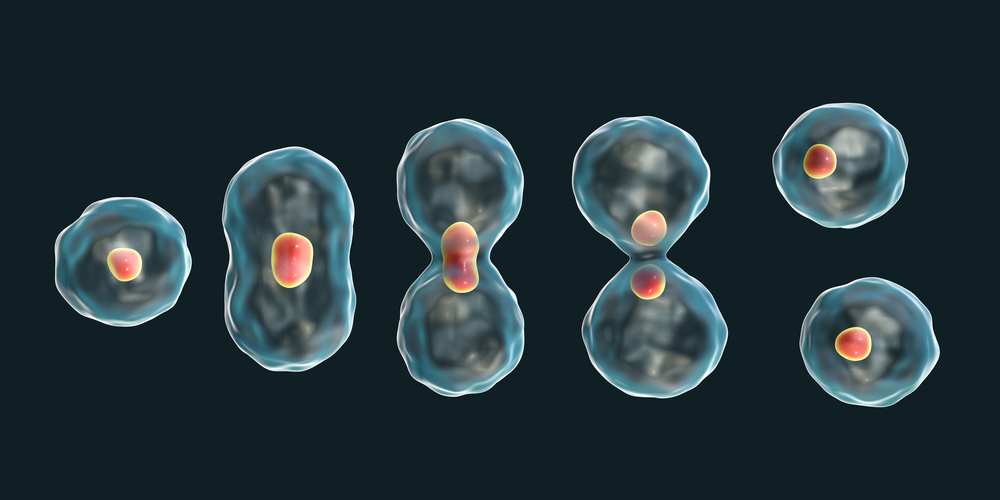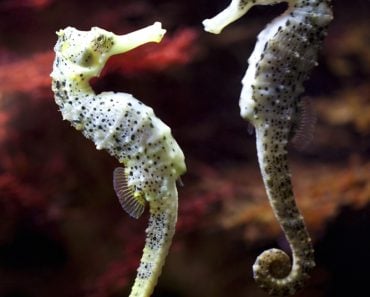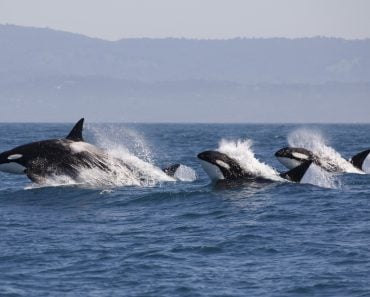Table of Contents (click to expand)
Sex change in animals is seen in around 500 species of fish and is achieved in various ways with the help of a special enzyme called aromatase.
Sex change in animals? It may sound a bit strange, but not only is it completely natural, it actually happens in many species of animals. The question is… why?

Life always seems to find a way to survive. All living things reproduce and pass on their genes from parent to child. An animal’s genes will therefore survive, even if the animal dies. Life can reproduce in two ways: asexually, wherein a single cell will divide to give two daughter cells, or sexually, which is when an egg from the female and a sperm from the male join to form new life.
To sexually reproduce, a population needs both males and females, but what happens if this process is missing a key ingredient? What if there are only males or only females? We don’t see this in humans, but it can be found in species such as the Wrasse (a fish that cleans the mouth of other fish, like this!). What do they do in such situations? They reverse their sex!

Recommended Video for you:
Sex Reversal
Sequential hermaphroditism (or simply sex reversal) is when a male organism becomes a female, or the other way around. This happens for a host of reasons: dwindling numbers of one sex, or that’s simply how the species’ colony works.
Before going into some of the unusual examples out there in the world, there are a few terms involved in sex reversal that we need to understand. Protandry is composed of two different words; proto (meaning first) and andry (meaning male). Protandry, therefore, means that a male transforms into a female. In the same way, protogyny (gyno means female), is the terms for when a female becomes a male. There are a few other ways that sexes change, but we’ll get into that later.
Clownfish: Marlin To Marlette?
When someone says clownfish, it’s natural for many people to think of the movie Finding Nemo. However, did you know that something was seriously wrong with this movie? If Nemo’s mother had to die, his father, Marlin, would have become his mother!
This is because clownfish are protandrous.
Clownfish shoals have three types of fish. First, there are many small immature males. Second, there are the second-largest variety, the reproductive male. Third, the largest fish, is the only female in the group. If the female dies, the second-largest fish—a male—becomes a female. The largest of the immature males becomes mature and now they will turn into the new mating pair.

The Harem Of The Kobudai
The Kobudai is a Japanese fish. It was featured in the BBC documentary Blue Planet II and was the original inspiration for this article.
Kobudai are also known as Asian Sheepshead wrasse, and live in groups called harems. The harem contains one large male and many females. The male tends to have a larger forehead and sharp teeth that point slightly outward. If the male happens to die, the largest female will begin courting the other females. Soon, that female will transform into the new male, even in terms of appearance!

What’s even more interesting is that if a female grows large enough, she will sometimes separate herself from the rest of the harem. When she separates herself, she will transform herself into a male and then fight the other male for control of the harem.
Other species of wrasse and parrotfish demonstrate this same phenomenon.
How Do They Change Sexes?
What decides whether an animal will be male or female? Quite simply, sex hormones: testosterone and estrogen. Testosterone is a male hormone, the most characteristic one, but the full range of male hormones are called androgens. Estrogens collectively refer to all female hormones, even though estrogen is only one of them. These hormones help develop sexual organs in accordance with their sexes.
If an animal has a high amount of estrogens, it becomes a female. In the same way, if an animal has a high amount of androgens, it will become a male. So how would they go about changing sexes? With the help of a special enzyme called aromatase, which has the ability to switch sex hormones. It does this by chemically changing the male sex hormones to female sex hormones, which in turn also changes the sexual organs.
So, when an individual needs to change sex, they secrete the aromatase enzyme and begin to shift.
We still don’t know the exact reason why these species change sex. The leading theory is the size advantage hypothesis. In simple terms, it says that an animal will change sexes after it reaches a specific size. We’re still not sure how to determine the exact mechanism by which this happens. The size at which an individuals changes sex could also be affected by any number of environmental factors. We still have so much to learn about this fascinating process!
Conclusion
This is only the tip of the iceberg! Sex change happens in far more ways than that. Even certain species of fish change sex depending on their situation. Gobbies are great examples of this, as they change sex depending on environmental and situational factors. They also change sexes in both directions! They change from male to female and vice-versa and research is still being done on their flexible lifestyles!
Chromosomes actually determine sex only in birds and mammals. In amphibians and reptiles, temperature factors during development determine their sex. Believe it or not, about 500 species of fish change sexes, as described above. Pretty wild, huh?
References (click to expand)
- (Jr.) C. P. H. (2019). Integrated Principles of Zoology. McGraw-Hill Education
- Avise, J. C., & Mank, J. E. (2009). Evolutionary Perspectives on Hermaphroditism in Fishes. Sexual Development. S. Karger AG.
- MUNDAY, P., BUSTON, P., & WARNER, R. (2006, February). Diversity and flexibility of sex-change strategies in animals. Trends in Ecology & Evolution. Elsevier BV.
- Erisman, B. E., Petersen, C. W., Hastings, P. A., & Warner, R. R. (2013, July 1). Phylogenetic Perspectives on the Evolution of Functional Hermaphroditism in Teleost Fishes. Integrative and Comparative Biology. Oxford University Press (OUP).
- Gender-bending fish - Understanding Evolution. The University of California, Berkeley
- The Reversible Sex of Gonochoristic Fish - Karger Publishers. Karger Publishers
- STELKENS, R. B., & WEDEKIND, C. (2010, January 18). Environmental sex reversal, Trojan sex genes, and sex ratio adjustment: conditions and population consequences. Molecular Ecology. Wiley.
- Guiguen, Y., Fostier, A., Piferrer, F., & Chang, C.-F. (2010, February). Ovarian aromatase and estrogens: A pivotal role for gonadal sex differentiation and sex change in fish. General and Comparative Endocrinology. Elsevier BV.
- Hodge, J. R., Santini, F., & Wainwright, P. C. (2020, July). Correlated Evolution of Sex Allocation and Mating System in Wrasses and Parrotfishes. The American Naturalist. University of Chicago Press.












